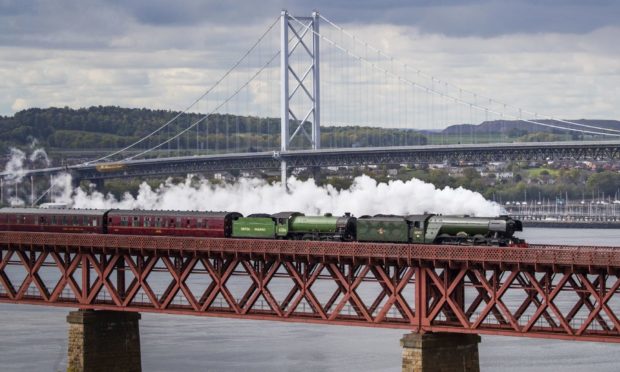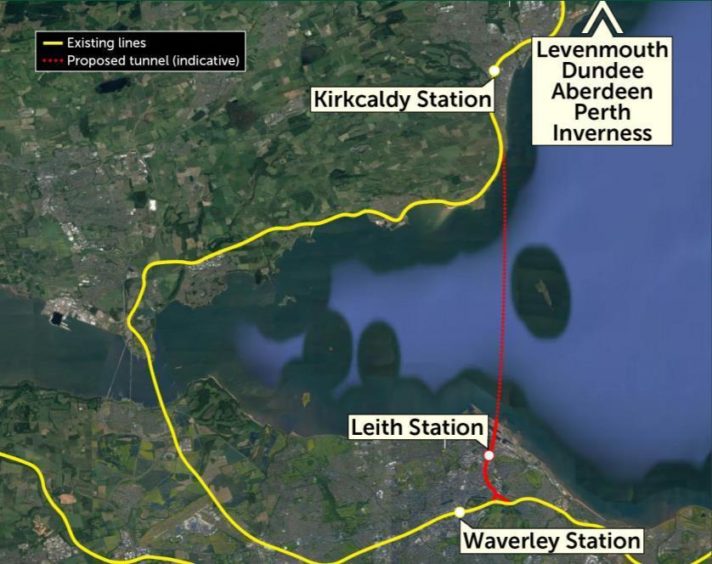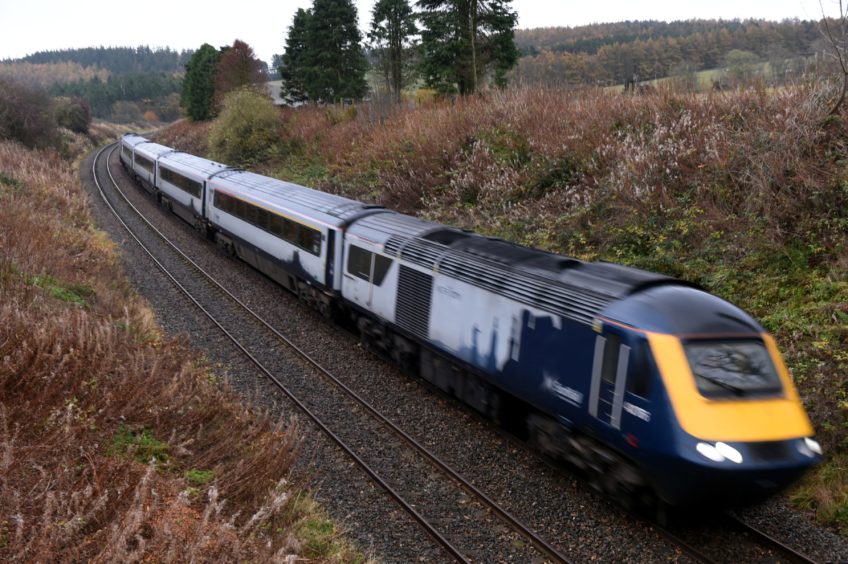The Scottish Greens have proposed billion-pound plans to build a rail crossing under the Firth of Forth which would “substantially” cut journey times north.
As part of a £22billion “rail revolution”, new tracks that would travel underneath the water between Fife and Edinburgh.
The party has also pledged to build new train stations in towns with more than 5,000 – including Peterhead, Westhill and Fraserburgh.
TramTrains could also be introduced to offer faster links between Banchory and Ellon.
The party commissioned a report into the country’s rail infrastructure from Deltix Transport Consulting, which claims the building of a new crossing would transform rail travel north of the central belt.
Pointing to European countries with successful tunnels like the Ceneri Base in Switzerland, which cost €3.6 billion and is roughly the same distance, as well as previous expeditions to mine coal from underneath the Forth in the past, the Greens and Deltix say their proposals are feasible as part of the country’s “green recovery” from coronavirus.
The Forth Tunnel would give this generation of Scottish engineers the opportunity to continue the strong traditions of their illustrious predecessors – creating transformational infrastructure for the nation.”
Deltix Transport Consulting associate David Prescott
As well as the massive infrastructure investment, the Rail for All programme would see upgrades to the Highland Main Line, the Far North Line, West Highland Line and the Ayr – Stranraer Line.
There would also be the option of reopening the Dunfermline to Alloa route and opening new stations across the country, party transport spokesperson and Highlands and Islands MSP John Finnie said.
Deltix said the Dundee-Edinburgh line had been built in the Victorian era and was “simply not fit for purpose”.
Where the tunnel could go
Rail analysts Deltix suggests pivoting Scotland’s main rail network away from Haymarket, which is currently where the main routes transit through.
This has caused a “bottleneck” according to the report, alongside the “speed limited” Forth Bridge, which was built more than 130 years ago.
Tunnels would be cut from from Abbeyhill to Seafield, between Kinghorn and Kirkcaldy, passing under the water and under Leith, emerging at east of Waverley.
By building a new station and re-routing through Leith, it is claimed the bottleneck through the central belt would ease, as well as offering quicker services from people traveling between Aberdeen and Edinburgh through Fife.
Transformative
Deltix Associate David Prescott, who co-wrote the report, added: “At a stroke the Forth Tunnel can transform the geography of Scotland, just as the Forth Bridge did 130 years ago and the Forth Road Bridge nearly 60 years ago.
“It would substantially cut the distance between Edinburgh and east Fife, Dundee, Aberdeen, Perth and Inverness, while also putting Leith at the heart of the Scottish rail network.
“The Forth Tunnel would give this generation of Scottish engineers the opportunity to continue the strong traditions of their illustrious predecessors – creating transformational infrastructure for the nation.”
Scotland’s railways suffered ‘years of decline’
Mr Finnie said: “Scotland’s rail network has suffered from long-term, systemic under-investment, with governments of all stripes favouring roads.
“While some improvements have been made in recent years, the network north of the central belt has been largely neglected. As someone who, prior to the pandemic restrictions, regularly travelled by rail between the north and the central belt, I know all too well just how infuriating the current setup can be.
“The fact that many journeys take longer in 2021 than they did in Victorian times shows just how constrained Scotland’s railway has become.
“But we must not accept this decline. We can enjoy, and we must demand, the environmental, economic and quality of life benefits of a comprehensively modernised rail network.
“The public and political support for an investment-led green recovery from the current crisis is the ideal opportunity to deliver this overdue modernisation.
“Investing in a modern Scottish railway must be a key pillar of the green economic recovery. We know that it will create jobs and provide a legacy for communities across the country.
“The key principle of the Rail for All programme is to make the rail network accessible to everyone. Our aim is, as far as realistically possible, for every town with a population of more than 5,000 to be connected to the network.
“That would see a host of new stations developed across the country, with existing lines upgraded, and previously closed lines given a new lease of life.”
Train stations for the north-east
Under the proposals, new stations could be created for every town in Scotland with a population of more than 5,000.
This means Peterhead, Fraserburgh and Westhill would all be in line for a transport upgrade.
Currently, the only public transport to each town is the bus.
The possibility of a new station will also be explored in Banchory.
For town and villages with smaller populations, coach services will be established to connect them to the rail stations.
TramTrains for Aberdeenshire
Travel times between Ellon and Banchory could be massively reduced by the creation of TramTrains.
This concept involves a tram which has been modified to operate on Network Rail tracks.
They can operate on a street, along with tracks which means they can enter town centres.
In Aberdeenshire, they could follow two corridors to provide a convenient cross-city transit line from Ellon to Banchory.




